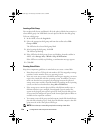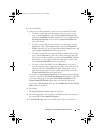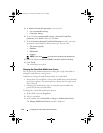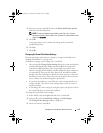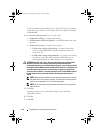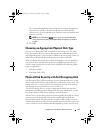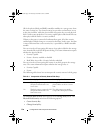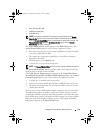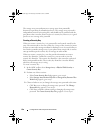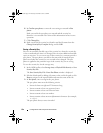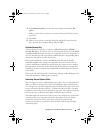
118 Configuration: Disk Groups and Virtual Disks
All of the physical disks and RAID controller modules in a storage array share
the same security key. The shared security key provides read and write access
to the physical disks, while the physical disk encryption key on each physical
disk is used to encrypt the data. A security capable physical disk works like any
other physical disk until it is security enabled.
Whenever the power is turned off and turned on again, all of the security
enabled physical disks change to a security locked state. In this state, the data
is inaccessible until the correct security key is provided by a RAID controller
module.
You can view the self encrypting disk status of any physical disk in the storage
array from the Physical Disk Properties dialog. The status information reports
whether the physical disk is:
• Security Capable
• Secure—Security enabled or disabled
• Read/Write Accessible—Security locked or unlocked
You can view the self encrypting disk status of any disk group in the storage
array. The status information reports whether the storage array is:
• Security Capable
•Secure
The following table shows how to interpret the security status of a disk group.
The Physical Disk Security menu appears in the Storage Array menu. The
Physical Disk Security menu has the following options:
•Create Security Key
• Change Security Key
Table 10-1. Interpretation of Security Status of Disk Group
Secure Security Capable - Yes Security Capable - No
Yes The disk group is composed of all
SED physical disks and is in a
Secure state.
Not applicable. Only SED
physical disks can be in a Secure
state.
No The disk group is composed of all
SED physical disks and is in a
Non-Secure state.
The disk group is not entirely
composed of SED physical disks.
book.book Page 118 Thursday, December 9, 2010 3:20 PM



